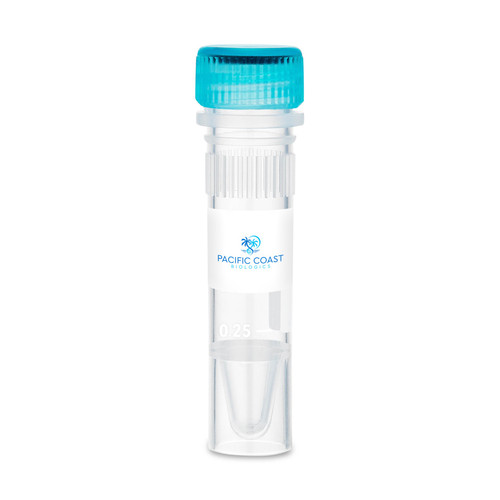PDGFs are dimers linked by disulfide bonds, composed of two 12.0-13.5 kDa polypeptide chains known as PDGF-A and PDGF-B. Among the three naturally occurring PDGFs (PDGF-AA, PDGF-BB, and PDGF-AB), they act as potent mitogens for various cell types such as smooth muscle cells, connective tissue cells, bone and cartilage cells, and certain blood cells. These growth factors are stored in platelet α-granules and are released during platelet activation, contributing to processes like hyperplasia, chemotaxis, embryonic neuron development, and respiratory tubule epithelial cell development.
PDGFs interact with two distinct signaling receptors: PDGFR-α, a high-affinity receptor for all three PDGF forms, and PDGFR-β, which specifically interacts with PDGF-BB and PDGF-AB. Recombinant Human PDGF-BB is a 24.3 kDa disulfide-linked homodimer consisting of two β chains, totaling 218 amino acids.
|
Product Specifications
|
|
| Species | Human |
| Published species |
Human, Mouse, Pig
|
| Expression System | E. coli |
| Amino acid sequence |
SLGSLTIAEP AMIAECKTRT EVFEISRRLI DRTNANFLVW PPCVEVQRCS GCCNNRNVQC RPTQVQLRPV QVRKIEIVRK KPIFKKATVT LEDHLACKCE TVAAARPVT
|
| Molecular weight | 24.3 kDa |
| Class | Recombinant |
| Type | Protein |
| Purity |
≥ 98% by SDS-PAGE gel and HPLC analyses.
|
| Endotoxin concentration | <1 EU/µg |
| Activity |
Determined by the dose-dependent stimulation of the proliferation of Balb/c 3T3 cells. The expected ED50 for this effect is 1.0-3.0 ng/ml.
|
| Conjugate | Unconjugated |
| Form | Lyophilized |
| Contains |
no preservative
|
| Storage conditions | -20°C |
CAUTION
For Research Use Only. Not for use in diagnostic procedures.













